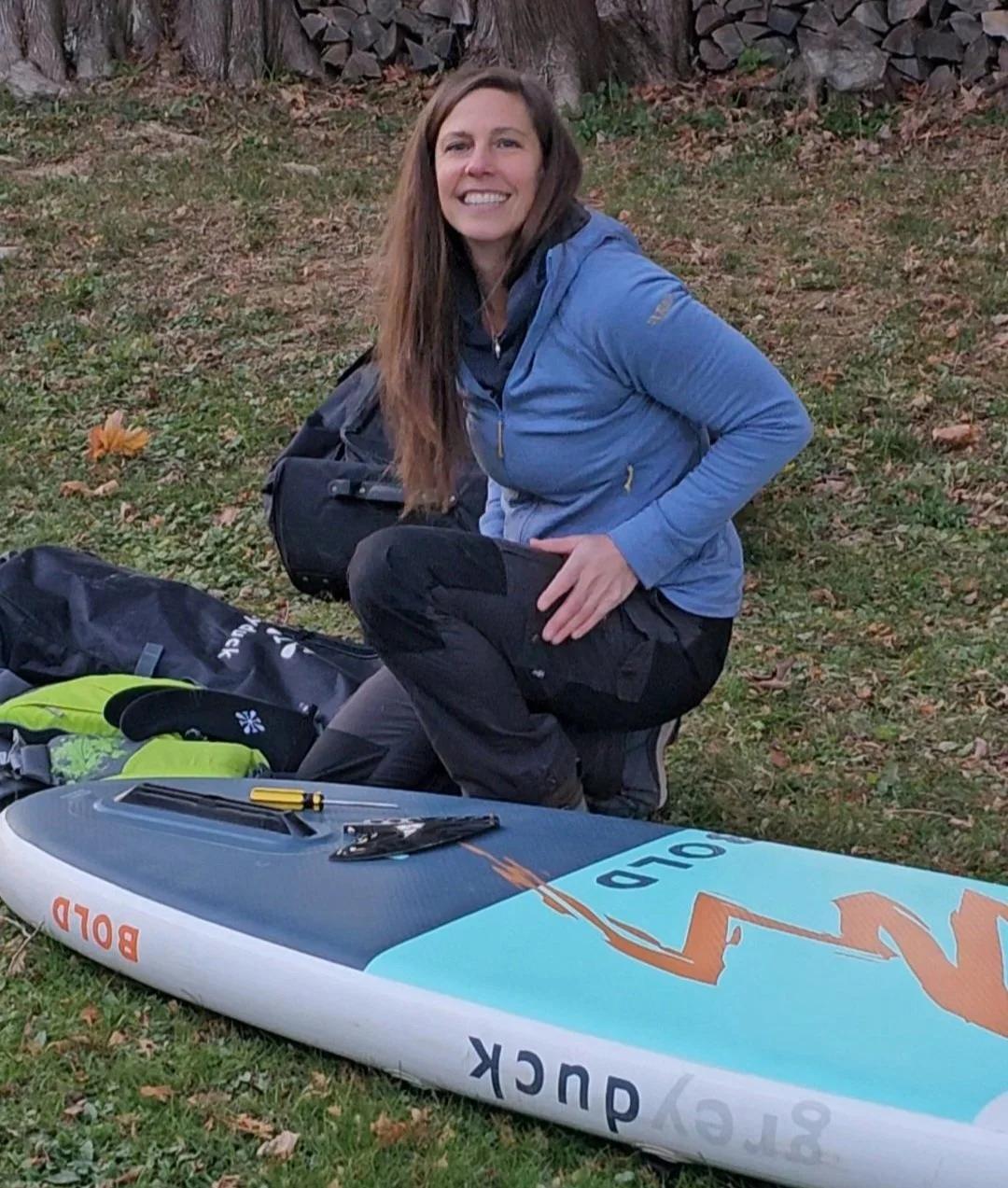Winter SUP Storage
Ah, winter. The beauty of winter in the north makes up for missing long, warm, summer days on the water. Wouldn’t you agree?
While we’re breaking out the snowshoes, cross country skis, and wool base layers, it’s a good time to make sure our summer gear is clean and ready to go into hibernation safely. Because of cold temperatures and changes in pressure, inflatable stand up paddle boards are best kept deflated for long-term storage. They should then be stored in their bags indoors where they will be protected from moisture, direct sunlight, freezing temperatures, and critters. If you have the space, you can leave your board inflated, but I recommend letting out some of the air and doing what you can to protect it from all the elements.
Most importantly, your board should be clean and completely dry before packing it up. Remember that the best practice is to always clean and dry watercraft between bodies of water. Paddling is a low risk activity when it comes to transporting aquatic invasive species, but it’s still the best habit to help keep our waters healthy and ensure the longevity of your board, paddle, and PFD.
This board is my youngest daughter’s. Since she weighs almost 75 pounds, the eight foot long Grey Duck Bold is perfect for her. She also has a tendency to attract canine companions who want to ride along with her.
Cleaning paw prints off the deck
Everyday cleaning can really be done with just water and a soft rag or towel. Mild soap and water is appropriate when water alone doesn’t do the trick. Avoid harsh chemicals and abrasive scrubbing that can damage your board. Tougher scuffs on the rails or nose can often be cleaned with a Magic Eraser. This is my secret for cleaning my fiberglass board, too. Too much sunlight can damage the materials, so dry in the shade.
Making sure the board is completely dry
Press the valve in to deflate your board. Roll the board starting at the nose to squeeze the air out. After deflating, unroll it. I keep the valve open with the valve head down for storage. Fold the board from the tail to accommodate the fin box, which can’t bend. When you get everything out and lay it flat in a few months, you may notice some fold marks, but they will smooth out once it’s fully inflated again.
It’s nice to make sure all your gear is together, including all paddle pieces, pump, repair kit, fin, and screws. SUP bags are usually designed with space for all these things. If you store the bag laying flat, with the paddle and pump on top of the bag, you’ll avoid unnecessary stress on the rails. This way you’ll be ready to go when the waters open up again in the spring.
In the meantime, get after those winter activities we’ve waited for like skiing, snowshoeing, and ice fishing. But maybe spend a little time cozied up, sipping some hot chocolate, and dreaming of warmer days to come.
Here’s the owner of the paw prints on the board.





